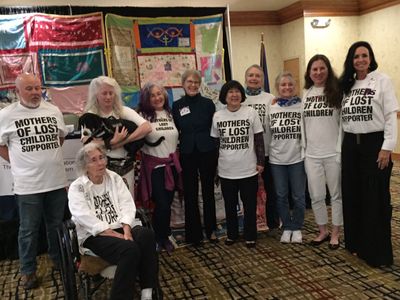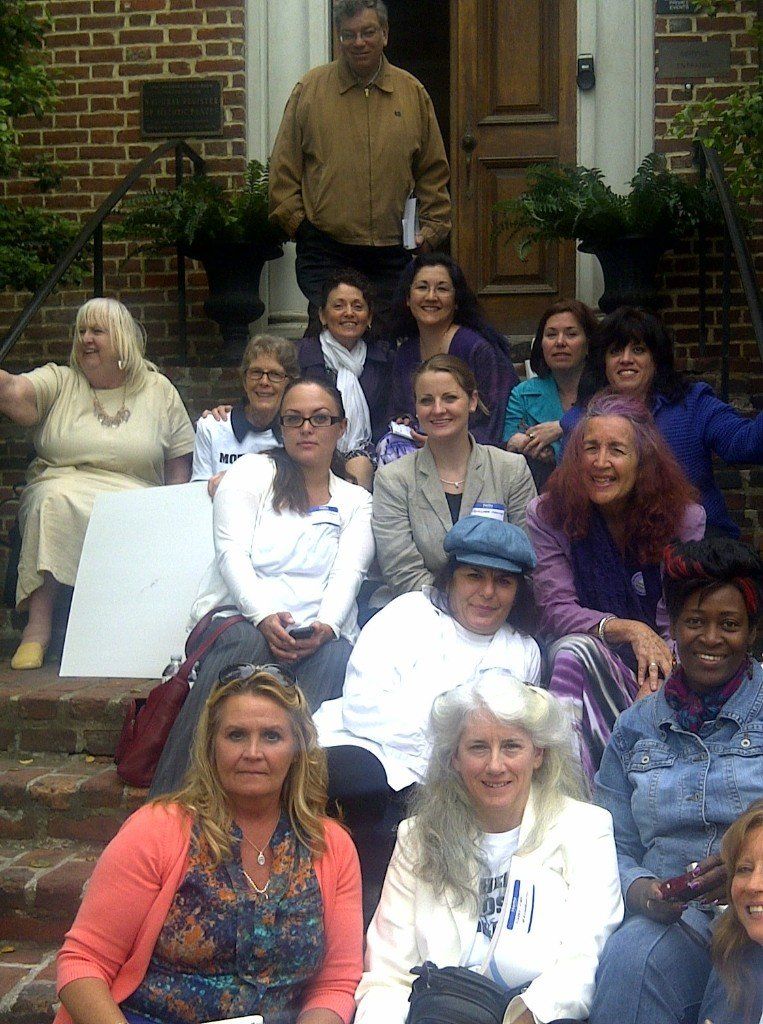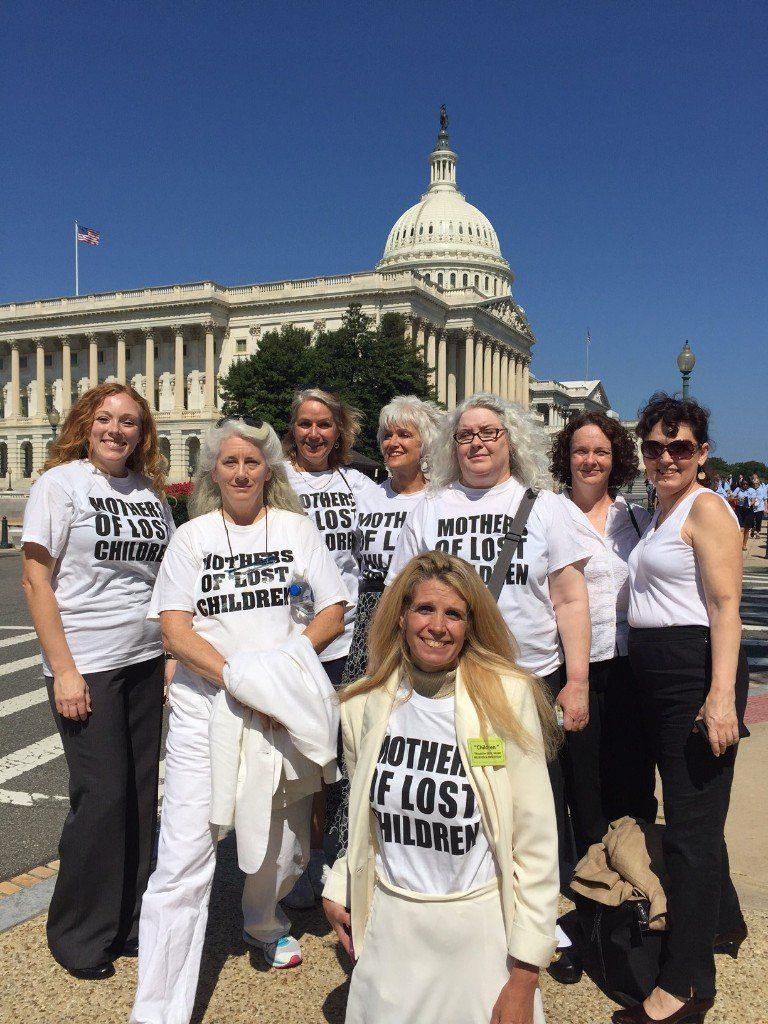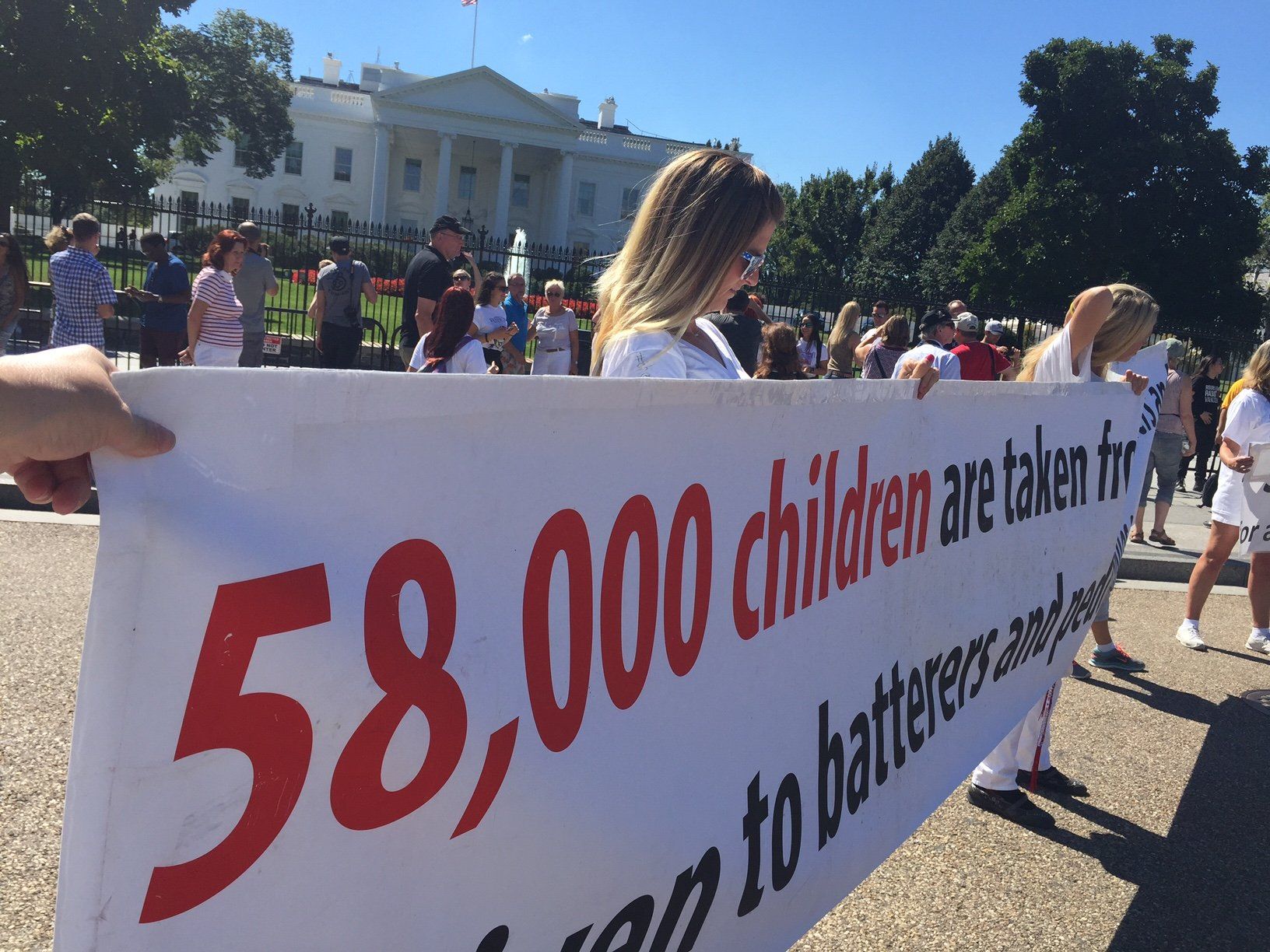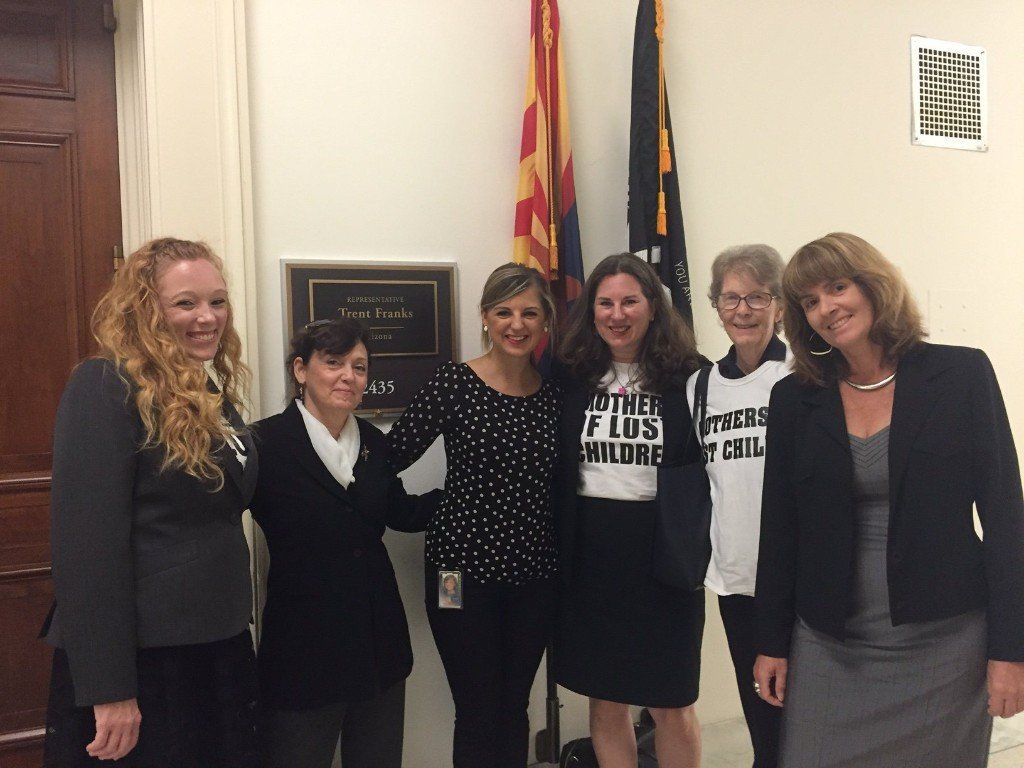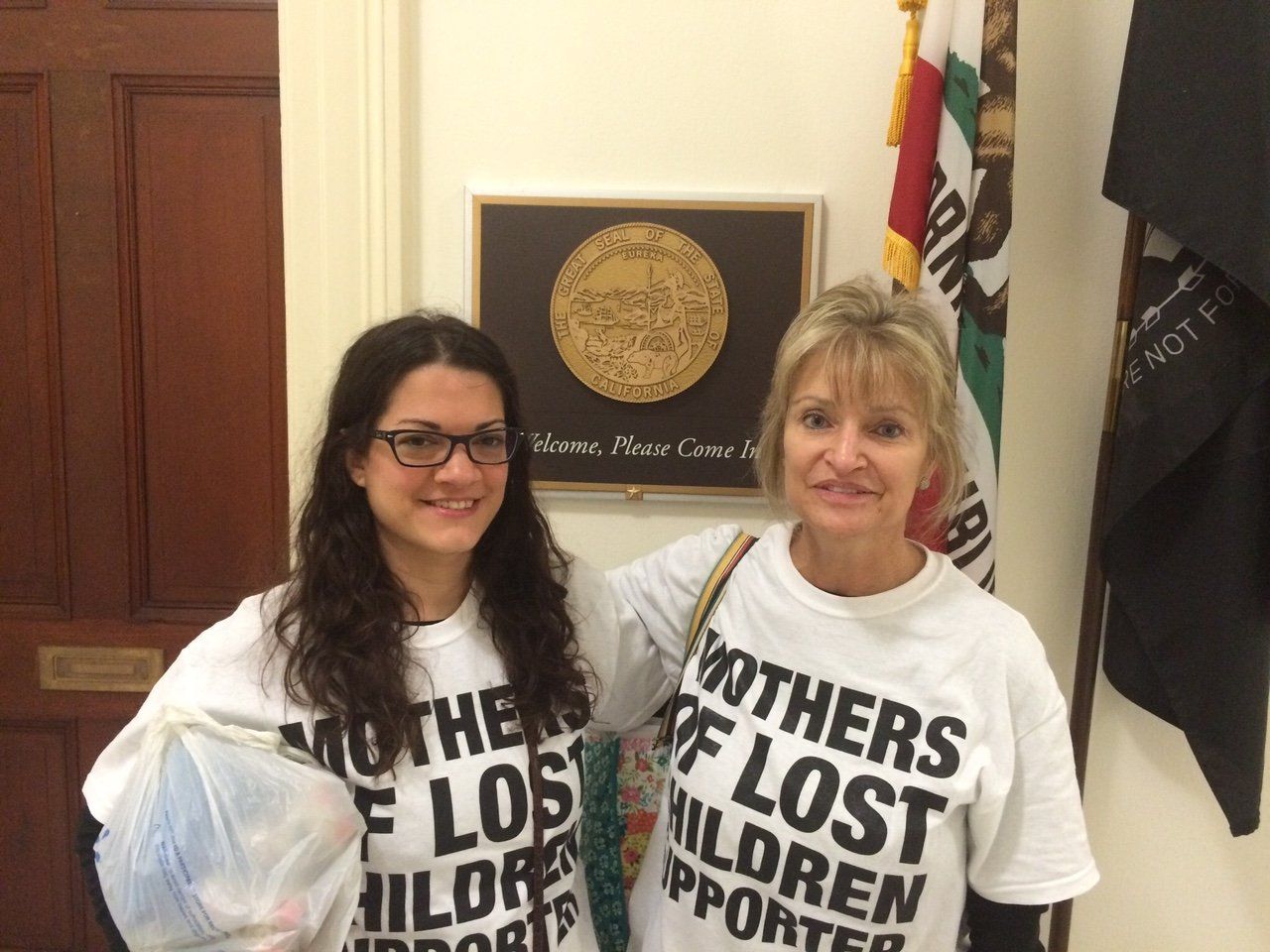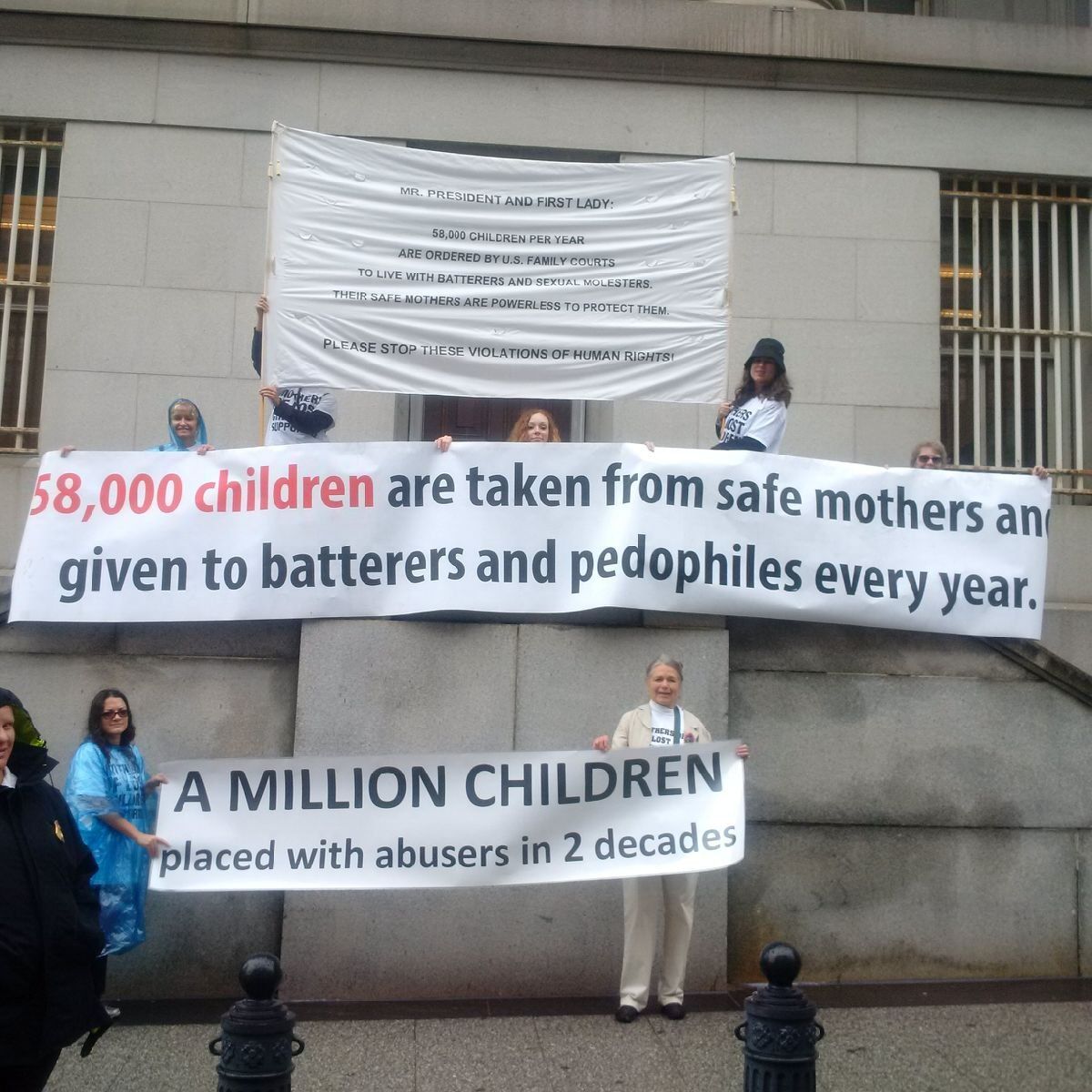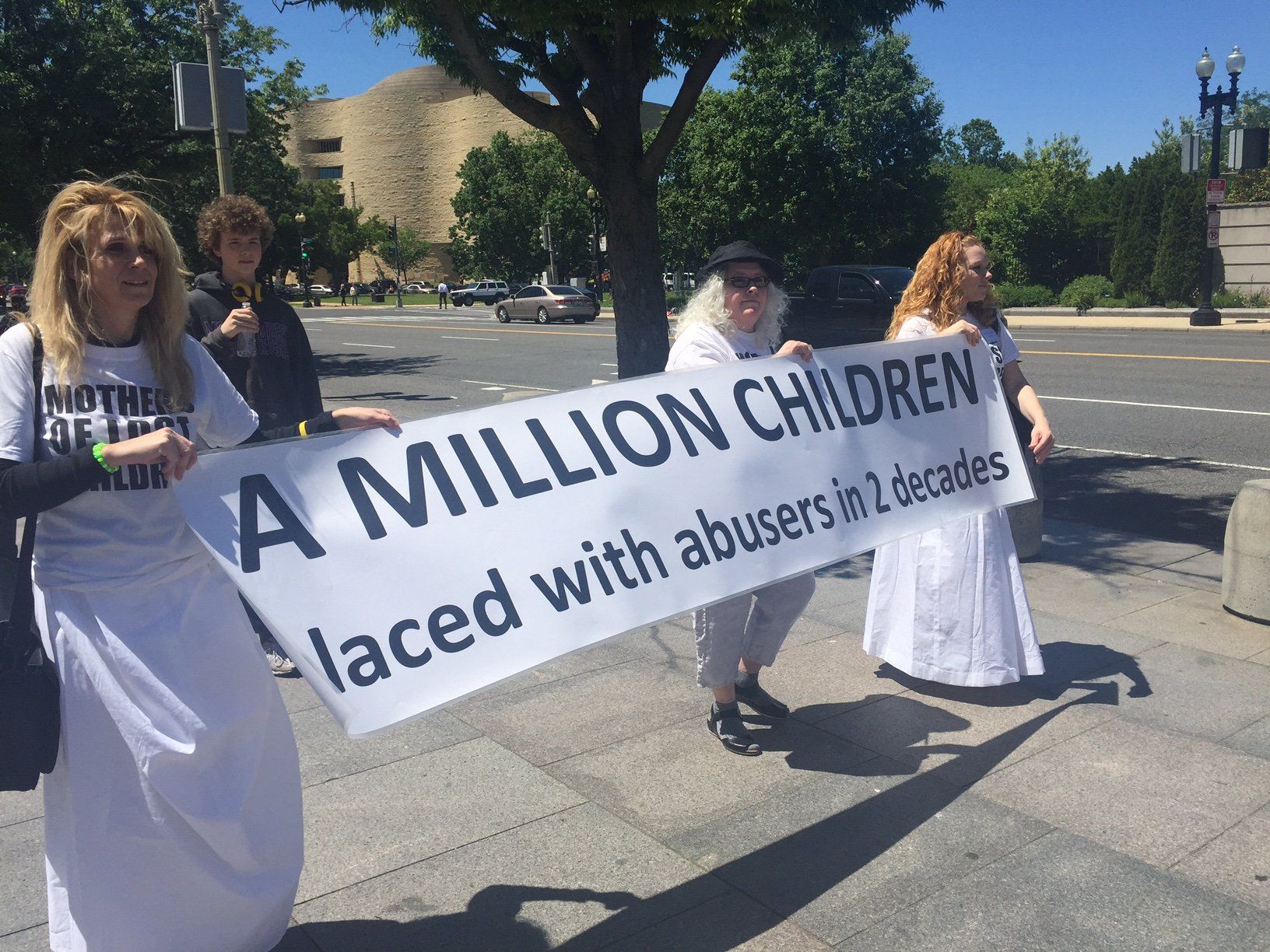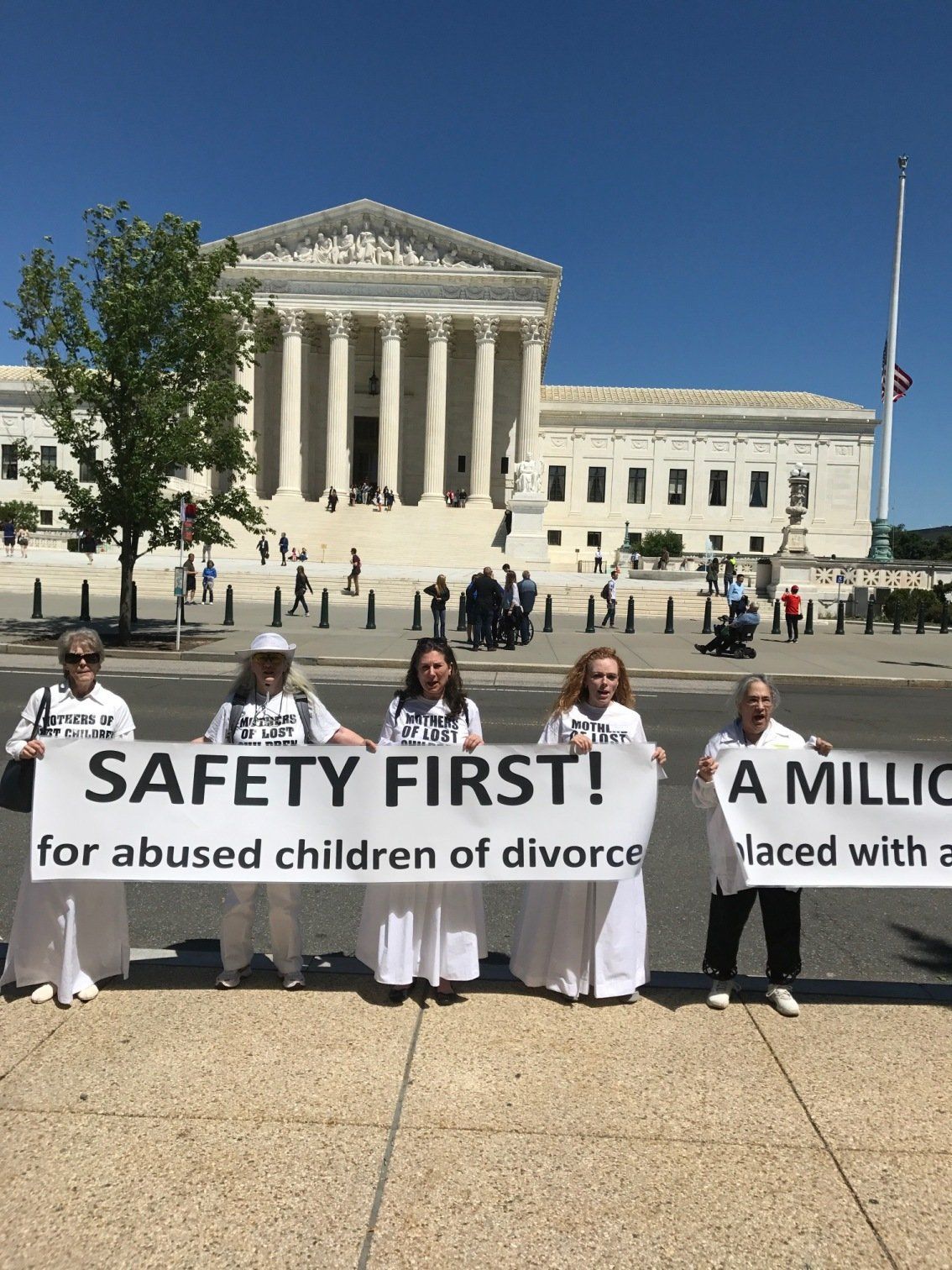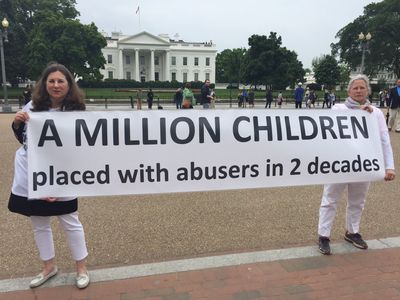About Us
If you have lost custody of your child to the abusive father, you are a part of Mothers of Lost Children
Our history to protect children from abuse
The movement of Mothers of Lost Children started in 1995 when three mothers, Connie Valentine along with Michelle and Stephanie, started meeting every week at the pretty quiet Davis, CA Central Park. They sat on wooden benches by the Hattie Weber Museum to wail and talk and pray for their children who lived with abusers.
They talked about the Madres de la Plaza de Mayo and decided to pattern themselves on those astonishing women whose adult children had been “disappeared” by the Argentine government during a brutal military dictatorship.
They defied the government’s state terrorism and began marching in 1977 at the Plaza de Mayo in Buenos Aires in front of the Casa Rosada presidential palace. Casa Rosada means “the pink house”.
They were first responders to the junta’s dreadful human rights violations.
It occurred to the three women in the Davis park that their children were basically being “disappeared” from them by the US government.
Rather than being killed, most of the children were “missing in action” or in home-based prisoner-of-war camps that were far worse than government-run prisons.
But over time, more and more reports of custodial batterers murdering the disappeared children began to surface.
They realized their own government was an ally in their opponents’ vicious war against children.
Connie, having grown up in a military family, and being a really good player of the board game Risk, knew a bit about war tactics and strategies. She knew you needed to gather troops, work together and move carefully. If you did not have equal or greater power than your opponent, you needed to gather stronger allies.
So they began. They learned they were not the only mothers who had encountered this crisis.
· Phyllis Chesler had already written Mothers on Trial
in 1986
· Elizabeth Morgan MD had been put in prison in 1987 for not telling where her child was hiding.
· The Friends of Elizabeth Morgan became Alliance for the Rights of Children, then became One Voice.
· Maralee McLean had already organized a protective mother rally at the US Capitol on Mother’s Day with Joan Pennington.
The three mothers started having conferences in Davis about child sexual abuse, and slowly began to find each other, one by one. They found out about Joan Pennington, and decided to call themselves California Protective Parents Association (CPPA), which would be the formal organization. Mothers of Lost Children was and is a decentralized social justice movement with no structure.
The federal Temporary Assistance for Needy Families (TANF) passed, shifting the support of children from the state to the parents in 1997. Healthy Marriage Promotion and Fatherhood Initiative gave annual awards of $150 million, and Access and Visitation (AV) gave grants of $10 million per year to states for programs to support and facilitate noncustodial parents. The focus was on fathers, and included a website fatherhood.gov. Mothers applied and were turned away.
In 1996, they met a woman named Josie whose little boy would not stop talking about sexual abuse being inflicted on him by his father, regardless of the retribution. By 1998, Josie died and her boy was put full time with the pedophile father.
As time progressed, they did make allies with bigger organizations, went to conferences to find more mothers, began the Courageous Kids Network, and met at least yearly with the CA Judicial Council to try to find ways to stop the madness.
They tried so many things. One of the most effective things they did was to take Mothers of Lost Children bulletins with a one-page history of different California cases to every member of the Legislature every week.
They went to the Battered Mothers Custody Conference, that began in 2004 and found more mothers from across the country. That next year they spearheaded the PBS documentary Breaking the Silence: Children’s Stories
and worked with PROTECT to end the incest exception in California in 2005.
There were inspirations along the way. When Jessica Lenehan Gonzalez’ three girls were abducted by the father and killed, she took her case all the way to the US Supreme Court, and when they said she had no Constitutional right to police enforcement of her restraining order, she asked “Who is the boss of the Supreme Court.” She was one small brave battered mother who stood tall and refused to give up.
In 2007, Attorney Dianne Post petitioned the Inter-American Commission on behalf of ten mothers whose children were taken and placed with batterers. The Inter American Commission has not yet made a determination in that petition, a decade later.
But the Commission did find that the United States had committed human right violations in the Gonzalez case and we were failing in our legal obligation to protect, recommending “multifaceted legislation at the federal and state levels, or reform existing legislation, including protection measures for children in the context of domestic violence.” (2011)
More documentaries were made over the years, including Family Court Crisis, No Way Out But One
and most recently What Doesn’t Kill Me. Someone quipped What Doesn’t Kill Me
gives me PTSD.
Hundreds of articles and books have been published on the issue. FOX television did a year-long series and ABC, NBC, and the Center for Investigative Reporting are working working on the issues. A landslide of media attention broke open the pedophile priest scandal.
Research through CPPA involving 399 protective mother surveys from 39 states shows:
· 90% of protective mothers were battered
· Over 80% had custody before they asked family court to protect the children from battery and/or incest
· After the court fleecing process by lawyers, evaluators, mediators, guardians, and other hungry professionals reduced the mothers to penniless, jobless, homeless, and friendless,
· Nearly three quarters had to represent themselves against their batterer who had one or more attorneys.
· 75% lost custody to the abuser. In California, 85% lost custody.
· Two thirds of these brave kids kept reporting abuse even while with the abuser, but were still disbelieved.
Nothing seemed to halt the process of stripping children from safe mothers and sending them to be beaten and raped.
So the mothers decided to go to Washington DC and ask the new president for help.
Beginning on Mother’s Day in 2010, Mothers of Lost Children demonstrated for 5 weeks in front of the White House, their presidential palace.
They found the suffragists headquarters while they were in Washington D.C. and discovered that then suffragists too had tried to stop the madness back in 1848. Right in the middle of their Declaration of Sentiments, opposing patriarchy, Elizabeth Cady Stanton wrote:
“He has so framed the laws of divorce, as to what shall be the proper causes of divorce, in case of separation, to whom the guardianship of the children shall be given; as to be wholly regardless of the happiness of the women—the law, in all cases, going upon a false supposition of the supremacy of a man, and giving all power into his hands.”
The mothers started to learn their way around Washington DC and decided to come back twice a year, demonstrating and going to Congress in their white t-shirts, telling their stories, hoping someone would know how to stop these human rights violations. They held several Congressional briefings on Safety for Children of Divorce.
Kathleen Russell, the Executive Director for Center for Judicial Excellence joined the movement as she recognized the crisis from the social justice side and worked with the press to raise awareness of this crisis.
Professor Joan Meier from DV LEAP stepped in, helping with a federal Resolution patterned on a 1990 Resolution 172 by Connie Morella which urged that credible evidence of physical abuse of one's spouse should create a statutory presumption that it was detrimental to the child to be placed in the custody of the abuser. This spurred good state laws.
H. CON RES 72 is the current Resolution, which urges states to make child safety the first priority in custody decisions.
After more than 6,000 contacts over the years Connie found protective mothers fit a profile:
You are generally prayerful people who are attractive, intelligent and assertive. Everything was taken, your dignity, your resources, your job, your friends, your family and then your children. You became mothers of lost children. It is a club nobody wants to join, but here we are.
Today, there are many mothers from coast to coast who belong to the movement of Mothers of Lost Children standing up for change.


